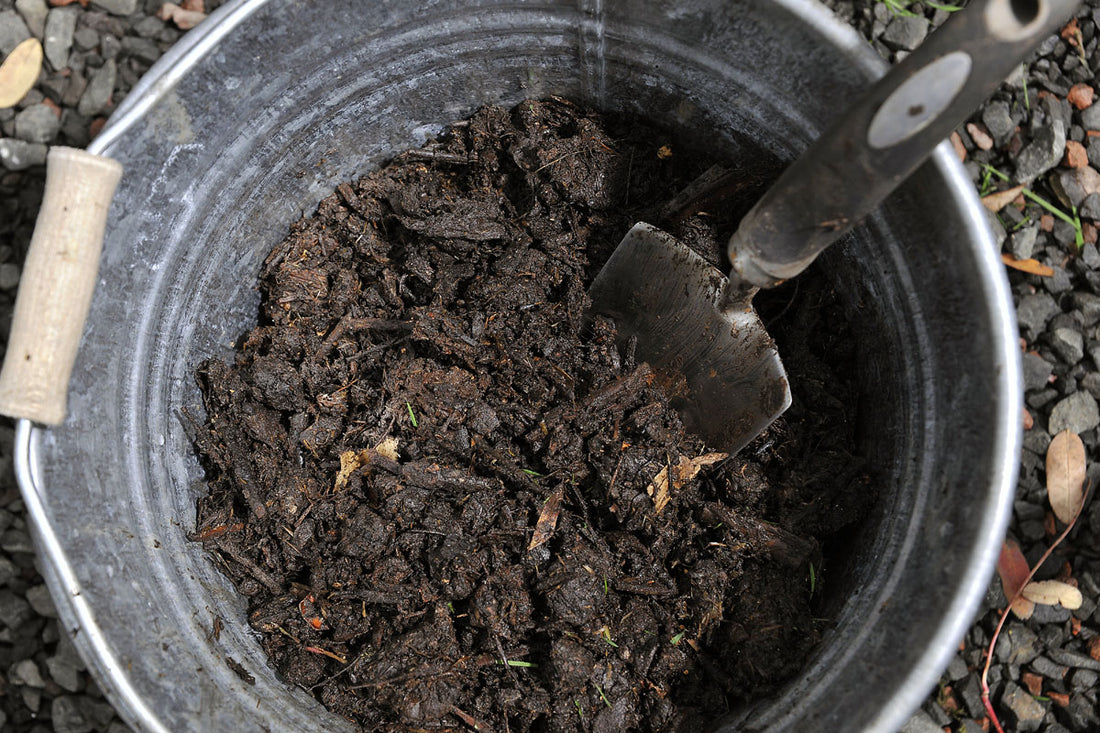There is a bewildering amount of compost types available to us as keen gardeners, but which is best? Is peat or peat-free better? Will making your own compost reap the best rewards for your garden?
What Is In Your Compost?
One of the ongoing debates surrounding purchased composts are the ingredients within it. It’s a fact that when any waste is collected, foreign bodies can be pulled in to the mix including items that are not biodegradable.
This is where homemade HOTBIN compost has one big advantage – you know what waste you are adding and therefore you know what you’ll be getting in your final compost.
Commercial Vs Homemade Compost Comparison
The best way to establish which compost you need is to know what you intend to use your compost for.
There are several different factors affecting compost makeups. The information below may appear technical however if you understand what properties you have in your compost and match this to your soil you will be hopefully find it of use.
|
|
HOTBIN / Homemade Compost |
Peat Free Organic Compost |
Peat Based Compost |
|
Environmental |
Positive – No waste collection or transport involved. |
OK - Waste is recycled and used, but lots of transport and processing costs. |
Negative – Unsustainable and destroys habitats that take thousands of years to make. |
|
Composition |
You know what goes in and hence what comes out. |
PAS100 badge is a good quality indicator, but always check label for contents. |
Always read the label. A wide variety including reduced, low, green & eco-friendly. |
|
Cost |
Initial outlay for equipment, plus cost of woodchip if unable to make own. |
Average of £3-6 per bag. |
|
|
Time |
It takes time to make good compost, this differs between hot and cold composting. |
It takes time to make good compost, this differs between hot and cold composting. |
|
|
Growing Medium versus Soil Improver |
Would require sieving before using for seed germination. |
Option to match product to specific growing need – eg seed germination, planting tubs. The term “multi-purpose compost” is used to describe growing media, but may contain a number of compounds. |
|
|
|
|
|
|
|
Water |
|||
|
|
HOTBIN/Homemade |
Peat Free |
Peat Based |
|
Water Holding Capacity (WHC) |
Good but depends |
Good – often artificial additions are added |
Peat holds |
|
Water Retention (How quick the sponge dries out) Rewetting |
It all depends on the % colloidal humus in your compost and peat. |
Organic matter such as peat and compost become hydrophobic when fully dried. |
Peat has poor water retention and re-wetting capacity. |
|
|
|
|
|
|
Aeration |
|||
|
|
HOTBIN/Homemade |
Peat Free |
Peat Based |
|
Aggregation |
Humus has such a strong WHC that the colloidal structure swells and blocks airflow. |
Multipurpose compost is designed for this purpose. John Innes and many other mixes have sand and |
Peat has the ability to hold water without too |
|
Aggregation |
In our trial we found that small amount of 1-10mm were good, but large amounts were very bad – too many pockets of air allow the mix to dry out and seedlings wilt. |
Interesting – few mixes add larger particles. Although we can in our trails, 1-10mm worked as well if not better than small <1mm. |
|
|
|
|
|
|
|
Nutrients |
|||
|
|
HOTBIN/Homemade |
Peat Free |
Peat Based |
|
Nutrients - NKP |
Has nutrients held from decay. (Note if too high can be a problem – especially in germination). Contains both ‘ready now’ and slow |
Normally mixed for the intended use of the compost. |
Virgin peat is low in |
|
|
|
|
|
|
Cation Exchange Capacity (CEC) |
|||
|
|
HOTBIN/Homemade |
Peat Free |
Peat Based |
|
|
Humus Few compounds come close to matching humus. Values do vary with % humus. Humus in composts varies widely from as little as 1%-to 30%! It has a profound impact! |
Depends if clay or loam is added. All composts tend to be c100. Few bags list a value as it is harder to measure. |
Peat (Sg moss) as used most growing media has low CEC it does not hold nutrient well. (This in part explains why peat based growing media get exhausted after 4-4 months growing. (However they can be refreshed by adding liquid or solid fertilisers). |
Summary
- Take care when choosing commercial compost and read the contents label on the back. It is a bit like food labelling; always check the label on the back to know what is in the bag.
- Remember, by making your own compost you will be confident of its quality and it will also be peat-free. Composts can and do look, feel and perform differently.

